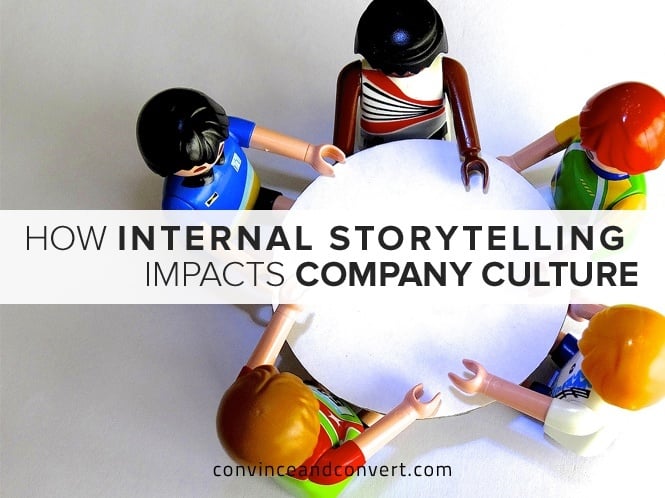
The stories employees and executives tell internally are the most human leading indicators of organizational health and marketplace effectiveness—more so than the marketing stories we tell externally.
And at some point, these will be the same because there is no sound wall between external and internal worlds. Before companies focus on customers and external marketing, they need to focus on employees, values, and internal stories—all the things that make up a strong internal culture. Everything great in marketing starts with great inside-out storytelling that values employees because that is the hallmark of a strong organizational culture.
The stories circulating internally point to what your people really believe your culture is about. And it may not be what leaders publicly say it is. The gap between highly positioned marketing messages and what employees really feel about the culture is evidenced by stories employees tell. A large gap between the two is a leading indicator of problems and shouldn’t be ignored.
Do You Know What Stories Your Employees Tell? Many Companies Don’t
Recently, I caught up with a wonderful colleague I knew years ago at a once very prominent, high-tech company in Silicon Valley. In the 90s, this company was THE place of innovation in 3D, and employees were very dedicated. Over time, that culture changed and it became insulated—a victim of its own success. Eventually that company failed in a very big way. The stories turned negative before the company collapsed.
This demonstrates a key point about employee engagement and stories: The stories employees share when management isn’t around—not the marketing stories—can predict increases or declines in trust, organizational health, and consequently, employee (dis)engagement. In this case, employees began to tell negative stories about how the company viewed them, and that was a leading indicator of trouble. That culture erosion coincided with a change in C-level mentality that can be illustrated in the following story.
Elephants Verses Penguins: Stories Reveal Truth
The stories the C-Suite tells—and those frequently repeated down the food chain—reflect values.

The former President and COO of this failed company told a favorite story about penguins and elephants, and he told it often (my colleague and I remembered it).
Penguins are not nurturing of their sick. When one falls behind or is injured, the other penguins attack it. They cannot be weighed down by the infirm. It defines pack behavior.

Elephants, by contrast, are majestic animals that care for one another. When one of them is sick, the entire herd rallies around and nurtures the sick one until it is better or passes. The entire tribe is affected. They feel a connection that keeps them looking out for one another. “We are the penguins,” the COO liked to say often, smiling and proud.
That story (repeated over and over through the ranks) communicated so many values, layers of culture, and how the company felt about competition and people. It wasn’t lost on employees exactly how under-appreciated they were. It was one of the most shared stories because it spoke to what was really valued—not what the company said to the external world, but how leaders made employees feel. Not only were employees expendable (and so were customers!)—the top brass bragged about it. It signaled the demise in trust, and cultural deterioration is a precursor to implosion.
The company eventually collapsed. It’s sadly and poetically Darwinian.
Change Your Inside-Out Stories, Change Your Culture
Stories reflect our values and our actions. If you want to change culture and lead change, you must identify and change the stories people tell. That starts by changing behavior.
Stories aren’t based on fiction; they are forged by the kinds of values and actions that leaders and employees exhibit over and over again. Start creating the kind of culture you want to be, and tell credible stories demonstrating that change within your company. Yes, change takes time. If you want to be a place where employees never leave, foster that kind of culture, and credible stories will emerge.
Most leaders analyze the marketing and brand stories of a company to determine its marketplace effectiveness. They are important; however, if you want to know if a company has the health to survive long-term and succeed in the marketplace, track the stories employees tell about the culture. They are the most powerful internal and external marketing tools around. What happens inside of a company eventually colors all: marketing, customer service, products, everything.
To change your culture, start by changing cultural behavior and the stories that define it.
What stories do your employees tell? Those stories not only predict engagement; they ultimately predict marketplace success or failure.
Get more content like this, plus the very BEST marketing education, totally free. Get our Definitive email newsletter.

